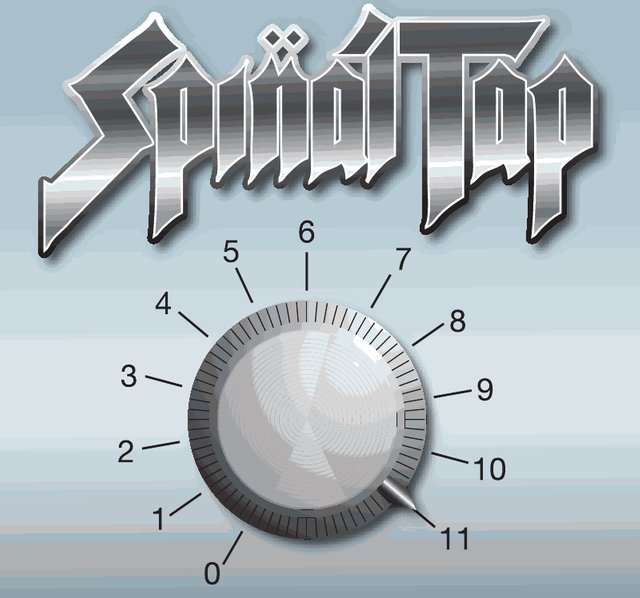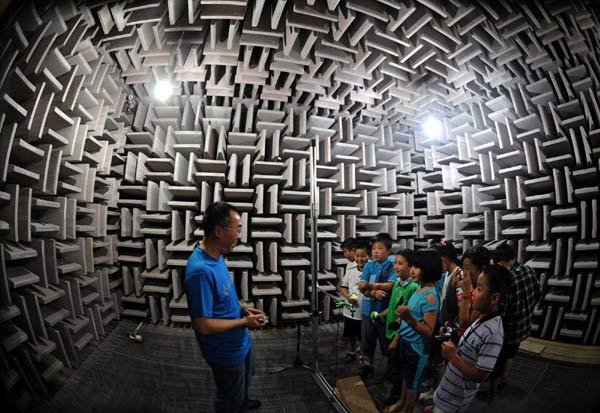Artificial acoustic (a musician's thoughts)
This is my attempt to explain the idea behind an artificial acoustic (otherwise known as acoustic enhancement). Please keep in mind that I'm a musician and not an acoustic engineer, so please forgive me for any mistakes I make. These are mainly my thoughts and reactions to it after several experiences with it.
Is it amplification?
First off, this is not amplification. There is some of that going on, but it is not taking a sound, converting to electric signals, amplifying then blasting it to the audience.
Every space has certain acoustic associated with it. This is affected by the size of the space, the shape of the room, what the room is made of and how many absorbers (meatbags, like you and me) are in the room.
A quick way of testing the space is just by making a quick clap with your hands. Listen to the timing of the return from the room. The clap also has a hard edge to it, if you listen closely you can also hear if it remains sharp or muffled or just unclear.
Of course, nothing beats actually having a quick seating rehearsal before the concert. Keeping in mind that a lot of meatballs will drastically change the acoustic in a often fairly predictable way.
Different spaces
This leads us to different spaces having potentially wildly different acoustics. With enough experience, you already have some idea of a space and how it plays with our against you the moment you walk in.
Some places are a completely dead acoustic zone. The worst case is the anechoic rooms that are commonly used for modern recording. These deaden the sound completely, so there is no return from the room. This makes it easier for the audio engineer to work their magic with less problems with echo and other artifices from the room.
On the other extreme, you have the cathedrals like the one at the opening of this post. The sound has a long return time and the are numerous echo's from all directions. Sometimes it can sound like there are multiple orchestras playing.
A more common reverberant space!

Source
Playing to the Space
This is a problem for acoustic (non amplified) instruments. We need to adapt to the space with the way we play to give the audience the best communication possible.
For instance, in a very dry (dead) acoustic, we tend to hold notes longer too create the illusion of a greater space. In addition, more care needs to be taken with the quality of the sound production as the dryness generally means that every little detail is heard.
On the opposite end, a wetter acoustic (like the cathedral), requires a harsher attack and clarity to the sound and much shorter notes. Perhaps choosing slightly slower tempi would often be a wise idea. This is to prevent the audience hearing a blurry wash off sound.
The acoustic of a space (like a concert hall) is pretty much locked in from the design of the building. This led to the creation of the professional development of fields in acoustic engineering and specialised architects.
Enter the technology!
Ha, let's begin with less high tech solutions first. Sound shells and curtains. A sound shell on stage acts as a natural amplifier for the musicians towards the audience. Conversely, hanging curtains and carpet in the concert space can help deaden the sound.
Now, the technology to do something a little more serious is possible. Acoustic enhancement is the technique of taking the sound from the stage, applying some processing and then restreaming it back to the audience.
This means that in theory, you could make any space sound like any other space. This is a potentially a great thing as it can fix acoustic problems that stemmed from the original design of the building.
Done with subtlety, it is a nice touch that can enhance a performance.
My thoughts
Personally, I have mixed reactions to this technology. No musician likes playing in a dead space, it requires a lot of energy and concentration to just get a decent sound out into the space, resources that can't be spent on the actual playing of the music. So, this technology promises to alleviate that problem.
However, when it is not done well it can be as disorientating as that pattern above. As mentioned before, acoustic musicians are trained to play to the space that they have, altering techniques and musical ideas to better transmit our message to the audience.
So, in the end, I'm a bit torn by the technology. It does seem like a useful tool, but like all tools the end result really depends on the crafter that weilds the tool.

Please let any classical musicians or classical music lovers that you know to subscribe to @classical-music, and to start using the #classical-music hashtag, so we can try and grow our community! Join us at our Dischord: https://discord.gg/ppVmmgt

Referral links
Mene, Investment jewellery.
Humble Bundle Monthly, PC games package every month!
Coinbase, the biggest fiat on and off ramp.
Binance, the biggest crypto exchange.
Mannabase, Universal income in the blockchain
Cryptopia, Lots of lesser known altcoins.
HitBTC Even more Altcoins!
Horizontal Rulers by cryptosharon
Team Australia footer by bearone


.jpeg)

.jpeg)



.png)
Hey @bengy, this is a really interesting read. I very much enjoyed the perspective of a musician on acoustics--you clearly know your stuff and this was easy to understand. I think your examples were really helpful for us non-musos to know what you meant when going from one extreme to the other. What kinds of places use artificial acoustics? Are we talking cathedrals and large concert halls etc. that were built hundreds of years ago (for example), or more modern buildings which could then be more adaptable to different kinds of music? Or is it mixed?
Hi @choogirl, thanks for reading the post!
I thought it was better to explain with extreme examples rather than trying to describe the grayer middle ground in between. It's pretty hard to do that with only words!
Generally, I have come across the artificial acoustic mostly in halls that were designed for speaking or large conference halls. Speaking (think of a theatre) generally requires a deader acoustic than music. After all you need to hear as many words as possible! Likewise, conference halls, you want to try to muffle the background noise. So in these cases where they have designed 'multi-functional' halls, generally the music side loses. On the other hand it is easier to add acoustic than to try and use destructive interference to deaden reverberation.
Cathedrals don't benefit from acoustic enhancement. Noise cancellation only works in a localised space (like headphones) or with long distances where the sound is almost pointlike (like stealthed helicopters) compared to the receiver.
Oddly enough, concert halls from earlier in history were much much smaller than the spaces that we have nowadays.
Sometimes in the modern (and reconverted spaces) design, for whatever reason the acoustic didn't work as expected. Normally cost cutting... Anyway, this is usually a band aid solution to fix it!
I hope that answers most of your questions? I really have to stop playing Steemit on a phone...
Ah yes, conference halls and being able to hear the speakers makes total sense. It probably wouldn't be the best for a concert venue then. Yes, that does answer my questions, thanks for your response!
I just can't help it! I noticed it while reading your post...
Is the guy with the kids in your fourth picture Joe Hisaishi?
Actually, I have no idea! It was a photo that I just picked up to show a room with no echo. I checked the source link again, there is no details of who it was in the caption. Maybe I should report them to Steem cleaners!
Took a better look at the guy in the photo. I think he probably just looks like Joe Hisaishi! After all, it was taken in China, Hisaishi's japanese.
Probably, but they are close by..
Your cathedral photo catched my attention. All the while I thought it was all mics, electrical signals and stuff. Very much complicated. Natural amplification which I never knew until now. Good read.
Thanks, of course natural acoustic and resonances came first. I heard an interesting podcast yesterday about the possibility that ancient tribes of humans appeared to have congregated and set up camps in areas of a certain frequency that corresponded with a low human voice. Possibly to enhance the chanting?
Wow this is very interesting I did not know we are absorbers of sound. Also I wondered about something the other day in winter when it snows does the snow absorb sound because it seems a lot quieter after and during snowfall??
I think so, but I'm not sure! When the snow has just fallen, there is a lot of space in between the snowflakes to trap and dissipate the sound. When it is hard ice, it should be quite reflective, so lots of echos (like an ice cave).
Like I said, not totally certain. Probably a question for an acoustic engineer, I'm only a violinist with a Physics degree...
Wow you play violin I am so envious are any of your tracks on Dsound yet would love to hear you play??
At the Musicoin link, I have a couple pieces up.
On dsound
https://steemit.com/classical-music/@bengy/qf037za4
https://steemit.com/dsound/@bengy/20180305t181030436z-bach-a-minor-adagio-from-bwv-1003
I'm also concertmaster in this group.
https://steemit.com/classical-music/@musicapoetica/a-round-up-of-our-music-posts
Sorry about the short post, at the airport chaos...
Your Post Has Been Featured on @Resteemable!
Feature any Steemit post using resteemit.com!
How It Works:
1. Take Any Steemit URL
2. Erase
https://3. Type
reGet Featured Instantly & Featured Posts are voted every 2.4hrs
Join the Curation Team Here | Vote Resteemable for Witness
Thanks for sharing @bengy.
I never knew so much thought goes into live music performances, your post opened my eyes!
Glad to hear it! The intricacies of everyone's individual profession of hobby is always interesting for someone else.